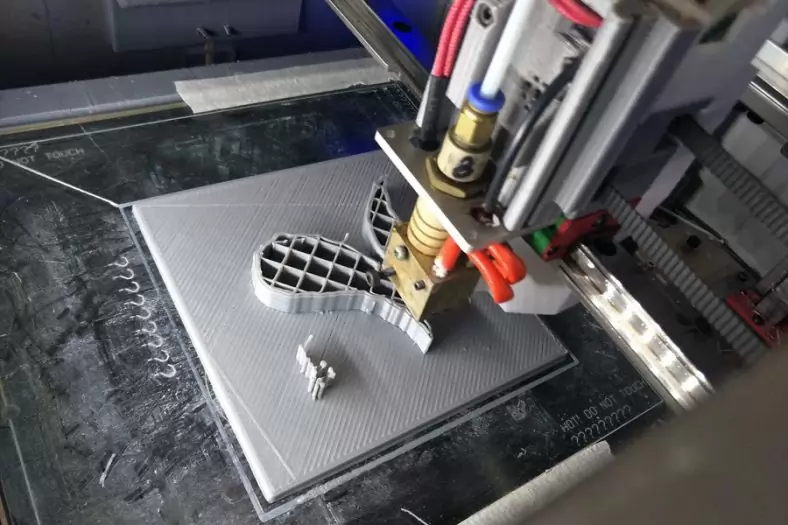
What Is Aluminum 3D Printing?
3D printing objects and machine parts is a high-tech advanced cutting-edge technology that can print almost everything, ranging from buildings, bridges and cars, to teeth, etc. Wire materials such as aluminum, titanium, stainless steel and superalloy powders are also commonly used.
All kinds of traditional aluminum alloy powder can be used to print objects and structural parts, and some aluminum alloys for 3D printing that cannot be used in conventional production have also been developed. For example, for more than 98% of deformed aluminum alloys, Fe is a a harmful impurity.
However, it is a beneficial alloying element for aluminum alloys for 3D printing, because it can significantly refine the microstructure, hinder the growth of grains, and greatly improve the mechanical properties of the printed parts.In the past two years,aluminum alloy 3D printing materials field, high-strength aluminum can be said to be very popular, and many industry practitioners are eagerly looking forward to this material.
The Material Of 3D Printing Aluminum
- AlSi10Mg is an aluminum alloy commonly used in 3D printing aluminum industrial applications. Its advantages are high strength, toughness, dynamic mass, improved thermal properties and buildability.
- AlSi7Mg is another high-strength steel alloy used in structural components in the aerospace, defense and automotive industries. The main advantages of 3D printed AlSi7Mg are its light weight, corrosion resistance and high dynamic load-carrying capacity.
- In addition, certain studies have demonstrated the successful printing of Al6061 and Al7075, which were previously considered incompatible with metal additive manufacturing methods.
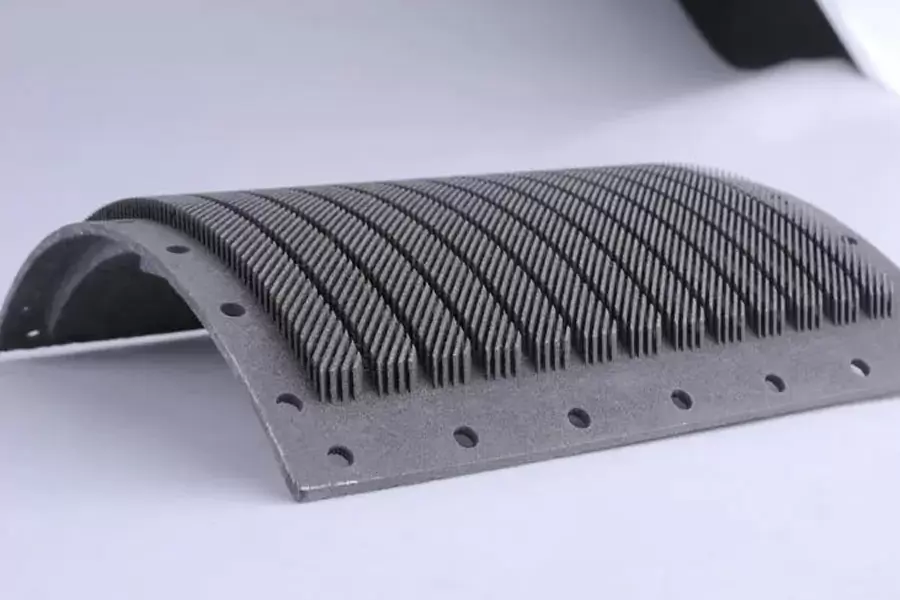
The Advantages Of Aluminum 3D Printing

- The advantage of aluminum 3D printing is that the mechanical properties of aluminum can be changed by changing the microstructure and internal force distribution.
- Research into aluminum 3D printing has also demonstrated material savings compared to traditional methods.
- High-tech industries using metal additive manufacturing have demonstrated faster manufacturing of complex parts, higher material strength, and ductility advantages compared to traditional methods.
- Aluminum additive manufacturing also enables the production of highly optimized structures that would otherwise be expensive, time-consuming, or even impossible to manufacture using traditional manufacturing methods. Additionally, 3D printed aluminum parts can be used with other parts to create hybrid structures.
- Using aluminum 3D printing, it is also possible to fabricate structural parts with energy-absorbing properties and internal reinforcement properties. Furthermore, undesired residual stresses generated in structural applications can be converted into favorable prestressing stresses.
Significant challenges remain in aluminum 3D printing for a variety of industrial applications. In some cases, 3D printing aluminum is more expensive than traditional production methods. In metal 3D printing, existing design methods must be modified to accommodate changes in material properties and variable geometries.
Metal additive manufacturing technology needs to be more standardized, and new quality assurance procedures need to be implemented to ensure that manufactured parts are reliable over their life cycle. As long as these technical and industrial challenges are addressed, aluminum 3D printing has great potential for applications in various industries.
3D Printing Aluminum Parts – Aluminum 3D Printing Services
Direct metal laser sintering (DMLS) is an industrial metal 3D printing process,Aluminum(AlSi10Mg) is an ideal 3D printing material with high abrasion and chemical resistance, there is a range of AlSi10Mg metal used in 3D printing services through DMLS processes. Aluminum 3d printing is a good choice if you are looking for low-volume aluminum alloy parts production and rapid prototypes for your projects. The 3D printed aluminum alloy AISi10Mg is ideal for combinations requiring good thermal properties, low weight. They can be machined prototyping, spark erosion, welding, microblasting, polishing and electroplating. Whether you require SLS, MJF, or FDM metal 3D printing service, Be-cu.com(Pintejin Group) provides quick-turn and efficient online 3D printing aluminum parts at competitive prices. Working with Be-cu to get your concept into reality.
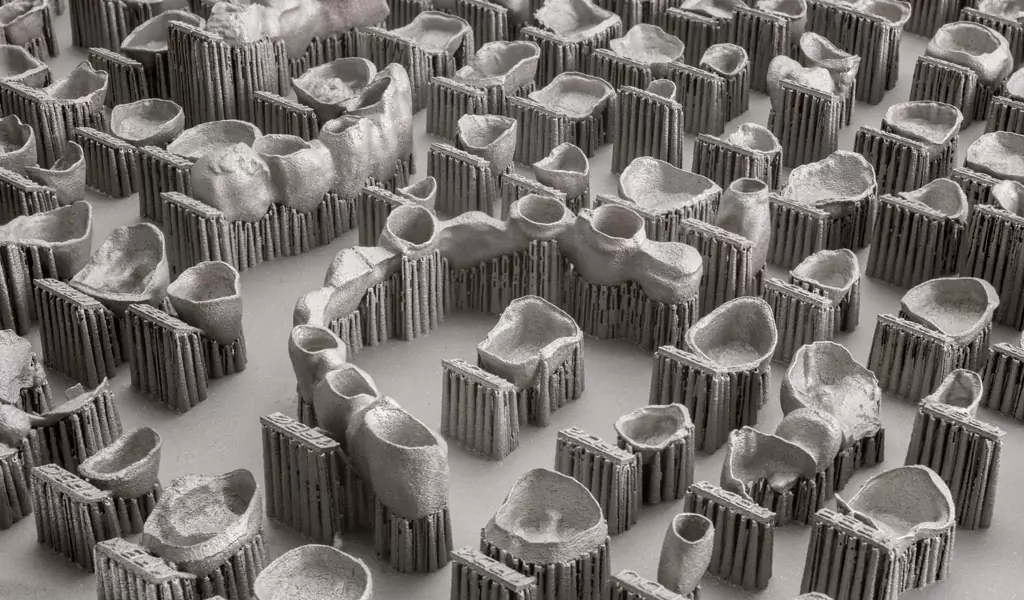
Metal DML S 3D Printing Technical Parameters
- Maximum Forming Printing Size Of Metal 3D Printer: 250x250x325mm; 2. 3D printing layer thickness: 0.02mm~0.04mm;
- The Achievable Accuracy Of 3D Printing:Typical Accuracy: ±0.02-0.05 mm (Accuracy is related to geometry. It varies according to product size, printing direction, materials and post-processing methods.);
- Post-Processing: high temperature annealing, polishing, welding and other processing;
Certifications & Quality Machining
- ISO 9001:2015 certified
- Fully compliant with the exacting requirements of our customers
- Compliance in DFARS materials sourcing requirements
- Strict compliance with PPAP and Process
- FMEA for automotive customers
- Skilled in KanBan and CMM Inspection and inventory management systems
- ITAF 16949 certified
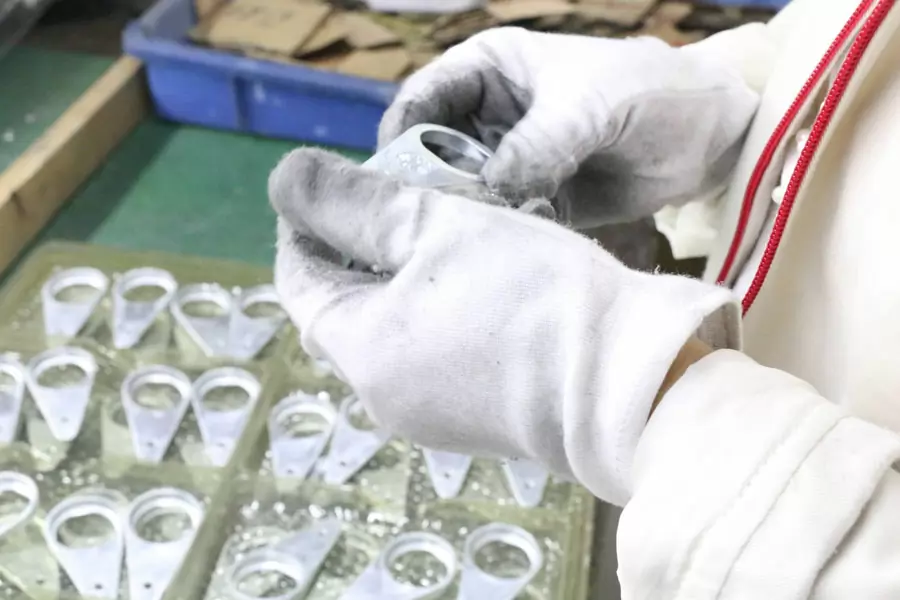
Top China Aluminum 3D Printing Parts & Case Studies
The metal 3D printer distributes even layers of metallic powder and the powdered metal is selectively melted to previous layers, which allows 3D metal parts to be fabricated of a bed of powdered metal. Using metal 3D printing allows us to produce parts with complex geometries that using traditional manufacturing methods not capable of and with materials that are difficult to process. 3D printing metal materials including aluminum, stainless steel, cobalt chrome, nickel alloy, titanium, etc.
-
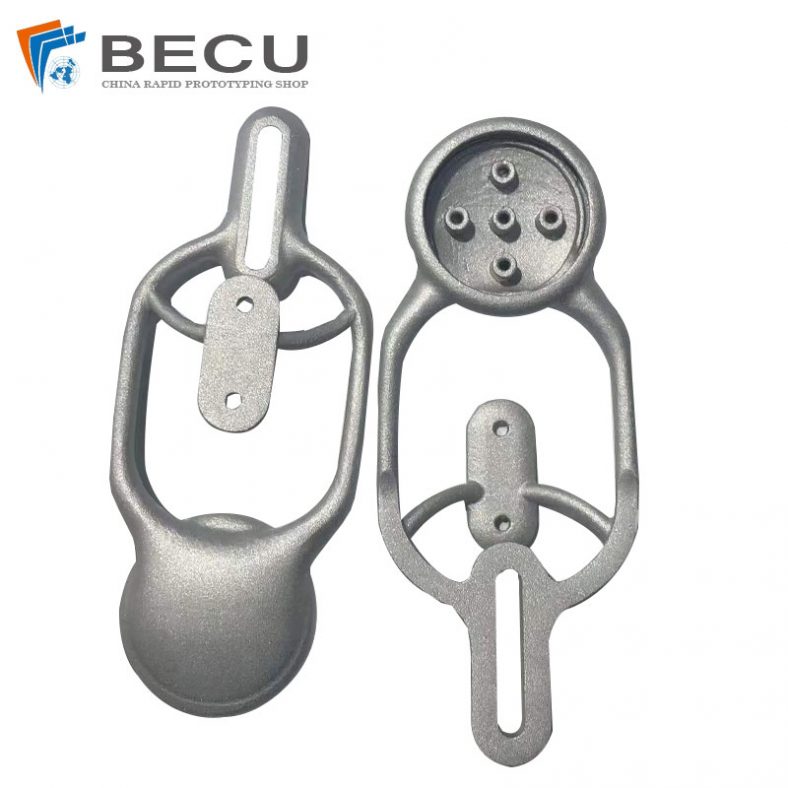
6061 Aluminum Alloy 3D Printing Black Dusting Parts
-
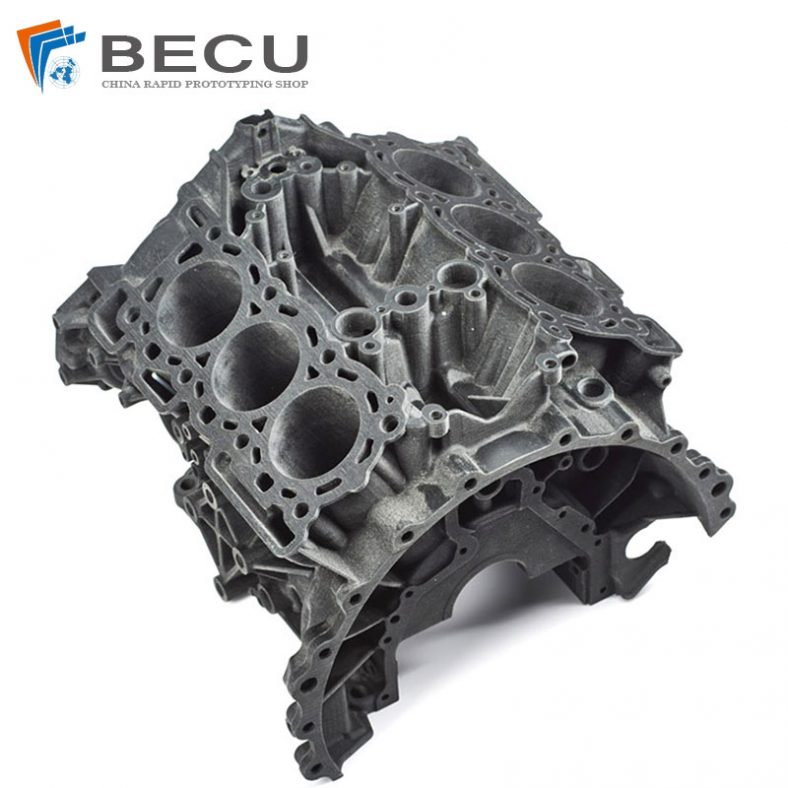
3D Printing Aluminum Automotive Engine
-
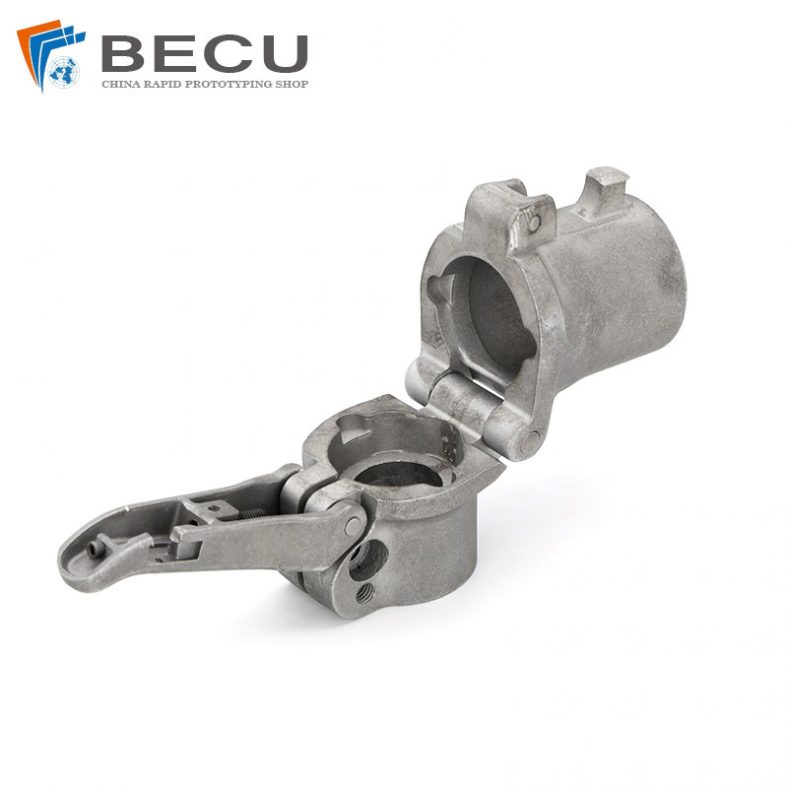
SLM 3D Printing Aluminum Scooter Accessories
-

Aluminum 3D Printed Dragon Head Chinese Style Man’s Ring
-
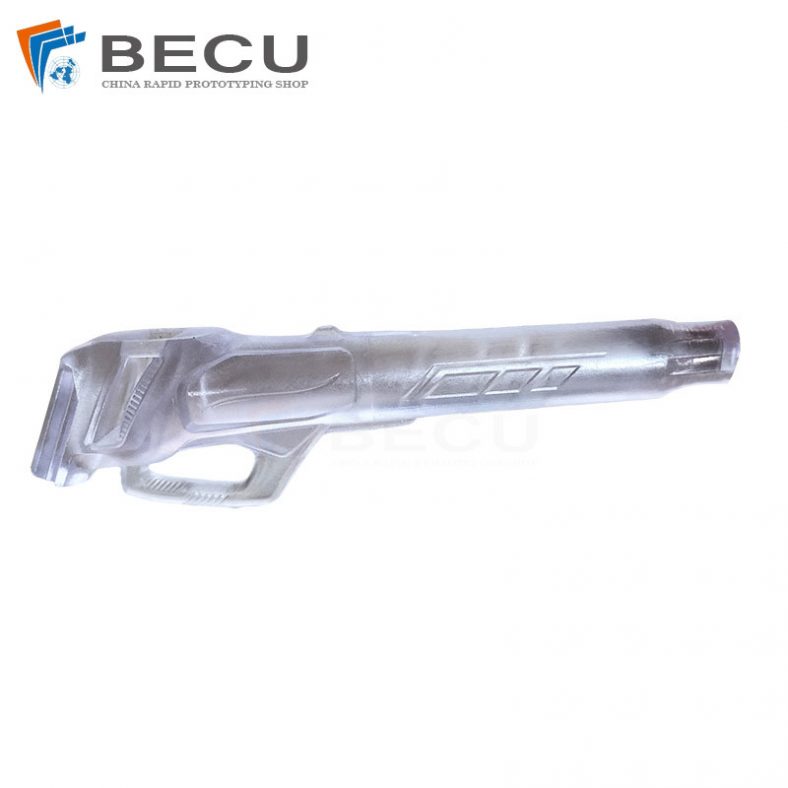
Aluminum 3D Printing New Energy Vehicle Charging Gun Cavity
-
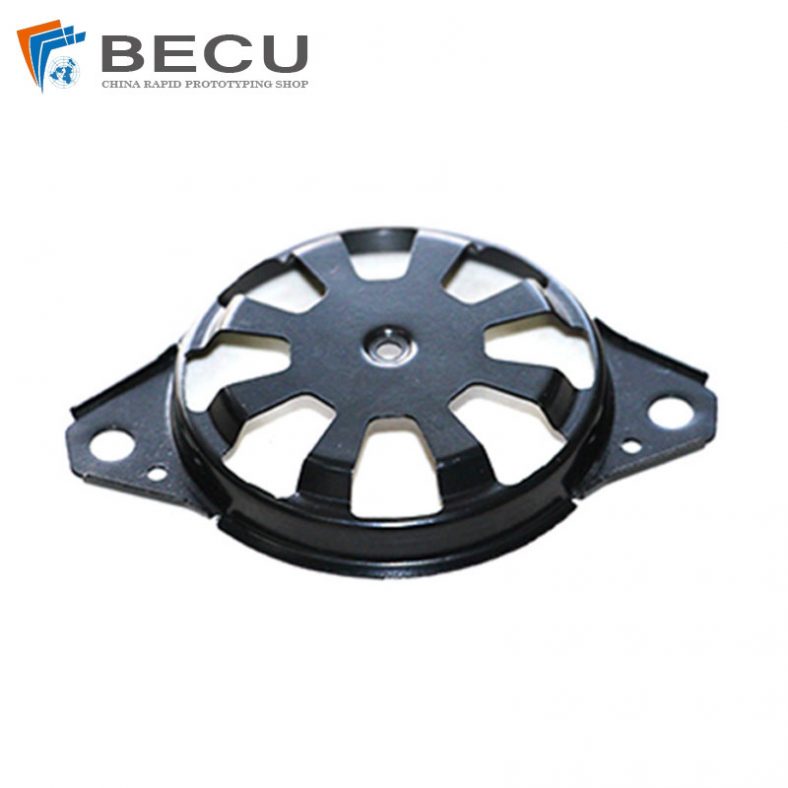
3D Printing Car Audio Horn Bracket
-

Direct Metal Laser Sintering AlSi10Mg Parts
10 Kinds Main 3D Printed Aluminum Alloys Material And Its Powder Manufacturer List With Special Properties
Materials play a key role in making 3D printing a true production technology. According to a Jabil survey, 41% of users surveyed believe that introducing better materials will have the biggest impact on encouraging mass adoption of 3D printing for production. Taking aluminum alloys as an example, the demand for aluminum alloys with special properties is growing, such as high temperature resistance, high strength, and high toughness.
On July 24, the launch mission of China Wentian Experimental Module was a complete success. The new aluminum-based composite material developed by the Institute of Metal Research, Chinese Academy of Sciences was successfully applied in the key components of the flexible deployment mechanism of the solar wing of the Wentian experimental cabin and several experimental cabinet adapters. The 3D printing technology reference noted that the experimental cabinet of the Wentian experimental cabin and the inner wall structure of the experimental cabin are connected by a six-point mechanical connection. The connecting piece serves under severe vibration and friction during the launch process and bears huge loads. It is the load structure of the experimental cabinet. The most stressed components in the design. The Chinese Academy of Sciences team has developed high-performance silicon carbide particle reinforced aluminum matrix composite forgings for this working condition, which has the advantages of low density, high strength and toughness, high wear resistance, good damping performance and fatigue resistance. This material is used to replace traditional aluminum, titanium and other alloys , to achieve excellent lightweight processing and manufacturing, withstand vibration fatigue and wear during the launch process, and reduce the weight of the parts by more than 20%.
From 2021 to 2022, new breakthroughs will be made in the research of 3D printing aluminum alloy materials, and a batch of new high-performance powders will be introduced to the market
1.Baohang New Materials Launched Ultra-High-Strength Aluminum Alloy Powder
The material launched by Baohang will be launched in 2022. It is a high-performance aluminum alloy powder suitable for the SLM process. It has ultra-high strength (620MPa) and good plasticity (8%); the material is AlMg alloy The system is named: HS5601 (where: HS is the abbreviation of High Strength, 5 represents a 5-series aluminum-magnesium alloy, and 601 represents the first generation of 600MPa aluminum).
Compared with AlMgScZr, it has higher strength and is expected to be applied to the special needs of high-performance materials in the aerospace and defense industries.
Baohang New Materials has been able to mass produce HS5601, and has plans to develop aluminum alloy 3D printing materials with higher strength such as 800MPa.
2.The Heat-Resistant Aluminum Alloy Of Beifeng Technology Meets The Requirements Of 25 Years Engine Regular Service
The Al250C high-temperature and high-strength 3D printing aluminum alloy material developed by Beifeng Technology has a stable tensile strength of more than 570 MPa and a stable elongation of more than 12%. The prepared aviation parts have passed the stability test of 5000 hours at a high temperature of 250 °C, which is equivalent to an engine. 25 years of regular service requirement.
Al250C makes up for the shortcomings of traditional 6-series aluminum alloy materials that cannot be fully applied to 3D printing process, and at the same time solves the problems of low strength and low use temperature of traditional aluminum alloys. It is a new type of high-strength aluminum alloy material with broad application prospects. Using this material to make aerospace aluminum alloy 3D printing structural parts is more promising to replace some titanium alloy components in the aerospace industry, and achieve the purpose of reducing weight and saving costs in the aerospace field.
3.Shaanxi Xinghuaye Independently Developed High Temperature Resistant, High Strength And High Toughness 3D Printing Aluminum Alloy
For high temperature aluminum alloys, the core goal is to maintain good high temperature strength. The high-temperature, high-strength, high-toughness 3D printing aluminum alloy AK09 series developed by Shaanxi Xinghuaye has excellent room temperature and high temperature performance:
- Room temperature performance: tensile strength 500MPa, yield strength 420MPa, elongation 17%;
- 250℃ high temperature performance: tensile strength 290MPa, yield strength 280MPa, elongation 18%;
- 350℃ high temperature performance: tensile strength 200MPa, yield strength 200MPa, elongation 11%.
Through R&D and trial production, the material performance is stable, and small batch production and delivery have been started.
4.EOS Launches A 3D Printed High-Strength Aluminum Alloy For High Temperature Applications
EOS has launched a new aluminum alloy, Al2139AM, specially designed for additive manufacturing, which provides excellent performance at high temperatures up to 200ºC, and is the strongest 3D printing aluminum alloy launched by EOS. Improved strength properties open up new opportunities for customers to significantly reduce part weight without compromising strength.
According to reports, the yield strength and tensile strength of the 3D printed Al 2139AM in the heat-treated state are about 500Mpa, with high temperature resistance up to 200°C and good corrosion resistance. EOS points out that the material features a quick and easy one-step heat treatment, which can reduce heat treatment time by 88%, resulting in faster final parts. Meanwhile, the 3D printed Al 2139AM parts can be electropolished and anodized.
5.Baohang New Materials
In addition to the ultra-high-strength HS5601 aluminum alloy, Baohang also launched a new type of temperature-resistant aluminum alloy-HT4251 to the market in mid-2022, which can maintain a stable tensile strength of 264.5MPa and a yield strength of 264.5MPa at a high temperature of 250℃. It is stable at 198.5MPa and the elongation is stable at 15%, showing excellent temperature resistance.
The traditional high temperature-resistant aluminum alloys are mainly developed based on AlFe, AlCr or AlCu alloys, and use Fe, Cr or Cu elements to form a large number of dispersed and thermally stable precipitation phases. The Baohang technology R&D team has taken a different approach. By adding a small amount of trace elements to the AlSi alloy system, it has successfully achieved excellent high-temperature mechanical properties while ensuring a good SLM printing process window.
6.New High-Strength Aluminum Alloy Of CRRC Research Institute
After mass production and multiple rounds of SLM technology verification, the high-strength aluminum alloy powder material has a stable tensile strength of more than 560MPa, a yield strength of more than 520MPa, and an elongation of 14-16%, which is significantly better than the printing performance of Airbus Scalmalloy® aluminum alloy powder and Other 7 series forged high-strength aluminum alloys.
Due to the different strengthening mechanism of Airbus Scalmalloy®, the printing material has a strength of over 260MPa and an elongation of over 10% at a high temperature of 215°C, almost doubling the high-temperature performance of Airbus Scalmalloy®. In addition, the material also has excellent corrosion resistance, which can meet the needs of 3D printing of high-end manufacturing parts such as domestic rail transit equipment and aerospace, and has broad application prospects and market value.
7.Changsha New Materials Industry Research Institute AlMgScZr
In February 2019, Changsha New Materials Industry Research Institute, a subsidiary of China Aerospace Science and Industry Corporation, successfully developed a high-strength aluminum alloy powder material with a room temperature tensile strength of 535MPa by adding rare earth elements, adjusting chemical composition, and exploring post-treatment processes. , the yield strength is 510MPa, and the elongation is 12%. The company has been working hard in the direction of additive manufacturing of high-performance aluminum alloys. At present, products have been formed in ultra-light aluminum-lithium alloys and ultra-high-strength aluminum alloys.
8.American HRL 7A77.60L Forged Grade High-Strength 3D Printing Aluminum Alloy
In October 2019, the high-strength 7A77.60L aluminum alloy for 3D printing developed by Hughes Research Laboratory (HRL) was officially launched on the market. Due to the use of zirconium-based nanoparticles as nucleating agents, this material avoids the easy cracking problem of 7075 and 6061 aluminum alloys when using laser printing, and can achieve fine-grained microstructures with a strength of over 600 Mpa, making it the first available Forged equivalent high-strength aluminum alloys for additive manufacturing.
The commercialization of HRL high-strength aluminum alloys began with a study on aluminum alloy 3D printing published in nature in 2017. Inspired by the melting and casting process, the researchers inoculated seeds by mixing nanoparticles as nucleating agents with liquid metals to achieve fine crystal growth under non-equilibrium conditions with large temperature gradients and fast solidification, thereby improving product performance. . After commercialization in 2019, the material has already secured large-scale component production at NASA and other aerospace companies.
9.Airbus Scalmalloy
In response to the demand for additive manufacturing of aluminum alloy parts for aviation, Airbus has developed the world’s first high-strength aluminum alloy powder material Scalmalloy for additive manufacturing. It is an aluminum-magnesium-scandium alloy with a room temperature tensile strength (520MPa), yield Excellent strength (480 MPa) and ductility (13% elongation), corrosion resistance, stable microstructure, and a material developed for additive manufacturing. Scalmalloy is designed for aerospace applications. As early as 2016, Airbus used this material to 3D print cabin partitions, which successfully helped the A320 airliner achieve slimming. At the same time, Scalmalloy’s excellent performance has also made it the preferred application in the motorsport industry. Material.
10.Aeromet International A20X
In 2019, the A20X aluminum alloy powder launched by British foundry company Aeromet International has a tensile strength of 511 MPa, a yield strength of 440 MPa and an elongation of 13% after heat treatment. The aviation heat dissipation structural parts developed based on this material have successfully replaced the traditional Medium temperature components made of titanium alloy, and help a certain French engine achieve slimming.
Aluminum alloys have great potential for use. Due to the low density of materials, high-strength aluminum alloys exhibit excellent specific strength, which is close to the main titanium alloy Ti6Al4V at room temperature. In order to obtain similar strength properties, 3D printed high-strength aluminum alloys also need to be supplemented by a heat treatment process.
The unique solidification conditions of the metal additive manufacturing process greatly limit the number of alloys that can be machined today, preventing metal additive manufacturing from realizing its full potential to transform design and manufacturing and disrupt multiple industries. However, it can be seen that the emergence of new materials suitable for additive manufacturing is accelerating, especially high-strength aluminum alloys.
In addition, high-performance metal materials used to be more dependent on imports, and the high price is only one of the factors that limit the application. Restriction of imports affects the development of technology. Fortunately, this phenomenon is speeding up to be resolved.
What Is 3D Printing High-Strength Aluminum
High-strength aluminum is relative to ordinary aluminum alloys. Today, the maturity of AlSi10Mg is very high, but the tensile strength of this material is only 300MPa, the yield strength is only 200MPa, and the strength is low. Although it can be used for general applications, it cannot meet the requirements for structural applications with high bearing stress. Therefore, there is an urgent need for high-strength aluminum 3D printing material solutions in the market.
A natural idea is to powder the traditional high-strength wrought aluminum alloy (such as 2024, 7075, etc.) and verify it to see if it can be printed. But unfortunately, it has been verified that this road will not work. Because the composition of duralumin is designed based on traditional manufacturing processes, it is not suitable for this emerging additive manufacturing process. An important reason is that the cooling rate of the additively manufactured molten pool during solidification is much higher than that of traditional manufacturing processes (such as casting), which will bring about the traditional material composition design that is not suitable for this rapid cooling environment and causes cracking. Phenomenon. Therefore, specialized materials must be developed for additive manufacturing.
In this context, Airbus’ Scalmalloy came into being. This should be the first commercially successful material developed specifically for additive manufacturing, and Scalmalloy is based on the Al-Mg-Sc-Zr system. It should be said that the Al-Mg-Sc-Zr system is not the first to be developed by Airbus, because Al-Mg-Sc-Zr has been used in aviation aluminum for a long time, but Airbus is the first to apply this material system It was successfully used in additive manufacturing and named this powder Scalmalloy. It is said that Airbus took ten years to develop the material.
Of course, Airbus has applied for patents in many countries in order to obtain commercial benefits. To a certain extent, this patent is too broad for latecomers to avoid, which is also one of the difficulties faced by current high-strength aluminum 3D printing materials.
Having said that, because the performance of AlSi10Mg is not enough, high-strength aluminum is needed. Because the composition of traditional hard aluminum cannot be 3D printed, the composition of high-strength aluminum must be specially developed for 3D printing. And because Airbus took the lead in successfully realizing the successful development of high-strength aluminum in the Al-Mg-Sc-Zr system and adopted the means of patent restriction, the latecomers had to find another way to develop new high-strength aluminum components. So what is high-strength aluminum? In a broad sense, 3D printing high-strength aluminum refers to a high-strength aluminum alloy 3D printing material specially developed for metal additive manufacturing processes that can achieve a tensile strength of not less than 450MPa at room temperature. Of course, the elongation cannot be too low ( should not be less than 8%). As for where the lower limit of yield strength should be set, it is also a matter of benevolent opinion. For example, Scalmalloy sets its lower limit at 470MPa, while Baohang’s internal control standard sets it at 520MPa.
Therefore, the yield strength of high-strength aluminum is at least 2.25 times that of AlSi10Mg, which will bring about a sharp expansion of the application range. It can even replace titanium alloys in some cases, because the density of aluminum is only about 60% of titanium. Therefore, when Scamalloy was first launched, it emphasized the advantages of being lighter in weight than titanium in specific strength.
In any case, Airbus is ahead, and the latecomers want to join, but there are two ways: one is to continue to optimize the Al-Mg-Sc-Zr system; the other is to open up new components.
The latecomers who take the optimized route are actually equivalent to continuing on the road that the predecessors have walked. This is relatively low cost and low risk, as it has proven to be the right path, considering how the ingredients are optimized and whether or not in fact infringement is being caused. Because Airbus has proved a composition system of Al-Mg-Sc-Zr, but there is no room for improvement and optimization in the content control of specific elements, such as the specific composition range of Mg, Sc, and Zr. Suitable? Do you want to add trace elements? How to ensure the uniformity of material composition? Doing such optimization work does not mean that the latecomers have not contributed, and it is impossible for Airbus to study all the components in this component system. Therefore, it is also a question worth discussing whether latecomers follow this road to cause infringement. At present, many domestic units and manufacturers have adopted this system.
Those who go to open up new components have also achieved some results. There are generally four sub-sects:
- One is the nano-enhanced 7075 system, which was first reported in 2019. The 7075 material with zirconium-based nanoparticle nucleation, developed by Hughes Research Laboratory (HRL) in the United States, has been shown to avoid the problem of easy cracking and has a strength of over 600MPa, becoming the first forged equivalent high-strength aluminum that can be used in additive manufacturing. alloy. But according to the author’s understanding, although this material system has been included in the international standard of aluminum as a new grade, its progress in commercial application is relatively limited.
- The second is the Al-Mn-Sc system, which was successfully developed by a research team led by Academician Wu Xinhua of Monash University. This material is named Al250C. It is said that its tensile strength exceeds 600 MPa, its yield strength can reach 580 MPa, and its elongation is 11%. The prepared components have passed the stability test for 5000 hours at a high temperature of 250 ° C, which is equivalent to the regular service of the engine. 25 years requirement. This system has also been developed and applied domestically.
- The third is the TiB2-enhanced AlSi10Mg system, which was successfully developed by the team of Professor Wang Haowei of Shanghai Jiaotong University. It can achieve a tensile strength of 530MPa and an elongation of 13.5%. It has been used in civil aircraft projects. The material system has invested a lot in commercial operation, established a special company, and established a production and manufacturing base.
- The fourth is the nano-ceramic reinforced AlCu system, which was launched by the British foundry company Aeromet International and named A20X. After heat treatment, the material has a tensile strength of 511MPa, a yield strength of 440MPa and an elongation of 13%. This material system has also been widely promoted commercially, and many foreign equipment manufacturers have listed it as one of the available materials.
To sum up, there are mainly two materials for the application and promotion of high-strength aluminum in foreign markets, one is Scalmalloy and the other is A20X. Of course, there are also other material systems (such as the Sc-free high-strength aluminum from Rusal), which may have also been developed, but have not been reported or have limited influence. As far as the domestic high-strength aluminum market is concerned, there are mainly three systems of Al-Mg-Sc-Zr, Al-Mn-Sc-Zr, and AlSi10Mg/TiB2 being formed and sold. In addition, a domestic company also proposed a system based on Al-Mg-Er-Zr, but the effect is unknown.
The above is the general situation of high-strength aluminum 3D printing materials.
What Are The Factors Hindering The Application Of High-Strength Aluminum
The main reasons that hinder the application of high-strength aluminum are as follows:
1) Cognitive Problems
A big problem holding back the adoption of new materials is cognition. Because users do not know that such high-performance materials exist, or do not know how such high-performance materials perform (because there will always be a lot of exaggeration and eye-catching flashy things in the market), or do not know how use it, or don’t know where to buy it. Of course, this requires real practitioners in the industry to publicize, promote, and do some practical work. It also depends on users being curious about new materials, willing to try and learn new knowledge.
2) Patent Issues
The most important thing is the patent problem of high-strength aluminum in the Al-Mg-Sc-Zr system. Of course, the Al-Mn-Sc system or other systems are expected to have similar problems. But the Airbus patent is particularly problematic. In China, Airbus applied for a patent titled: Scandium-containing aluminum alloy for powder metallurgy technology with Airbus Defense and Space Co., Ltd. as the applicant (patent application number: 201611272966.6). Its patent stipulates the composition of the scandium-containing aluminum alloy as follows:
Mg: 0.5 -10 %; Sc: 0.1 – 30%; Zr: 0.05 – 1.5%; Mn: 0.01 – 1.5%
Of course there are some other trace elements. But such a broad scope can be said to violate the common sense of materials science. Because if the patent protection is so broad, the compositional research that materials science needs to do can be said to be meaningless. In fact, materials are extremely sensitive to composition, and a very small change in the content of some elements will cause great changes in material properties, which makes the work of material optimization practical.
But Airbus’ patent is undoubtedly a sword of Damocles hanging overhead. If you want to use this material system, you can’t get around its patent. To some extent, this is a means adopted by advanced foreign companies to restrict competitors. But we have faced too many similar situations, so it is understandable that users are afraid to use it easily. However, it should be pointed out here that such patent protection is problematic, or at least inappropriate.
3) Cost Issue
Taking the Al-Mg-Sc-Zr high-strength aluminum powder material as an example, its price in the market is as high as 1500-2000 yuan/kg, compared with the price of AlSi10Mg less than 400 yuan/kg, while the price of TC4 has been as low as 1200 yuan/kg. Users will think that this high-strength aluminum, which is more expensive than titanium alloys, is really necessary for application? The reason for the high cost of Al-Mg-Sc-Zr high-strength aluminum powder needs to be explained here.
The most important thing is that the current demand is small, and the current amortization cost will not be high. Secondly, the price of raw materials is expensive, especially AlSc raw materials, which are as high as several hundred yuan/kg, which is dozens of times that of conventional aluminum materials, and affected by the international situation, the price of aluminum continues to rise. The third is the process cost. Due to the addition of a high proportion of alloying elements, the segregation of components and the unsmooth atomization will be caused, which will result in low output and high unit cost. At the same time, we should objectively see that titanium alloys are as high as 2000-3000 yuan/kg at the beginning of their application, and even AlSi10Mg is as high as 1000 yuan/kg. Especially in the case of a single importer, the price of materials remains high. On the contrary, it is precisely because of the participation and efforts of domestic material suppliers that the price of 3D printing materials has become more and more affordable to the people, and at the same time, the scope of application has been further expanded. If based on this, the industry should also unite to discuss the countermeasures for the high-strength aluminum patent of the Al-Mg-Sc-Zr system.
If the market demand can reach hundreds of tons in the future, the author boldly predicts that the price of high-strength aluminum in the Al-Mg-Sc-Zr system can be reduced to the same level or even lower than that of titanium alloys.
4) Printing Process Problems
This question involves the actual use level. Of course, there will be some pioneers willing to try new materials, but the printing of this Al-Mg-Sc-Zr material is not as simple as AlSi10Mg. Although its process window is wider than that of other systems of high-strength aluminum, due to its high content of Mg (Mg is an extremely volatile element), a large amount of black smoke is generated during the printing process. When the process control is not good, holes will also be generated. Most importantly, this material will also produce a large amount of fine black slag during the printing process, which will be deposited on the powder of the printing layer when the wind field is not well controlled, which will bring performance hazards to subsequent forming. . In addition, as the name suggests, high-strength aluminum has high strength but also great stress. How to avoid the risks brought by high stress? This involves the need to consider the appropriate placement of the model, the need to add reasonable supports, and the setting of appropriate heat treatment systems and steps when the parts are printed. The high strength of the Al-Mg-Sc-Zr system material is achieved because a large number of finely dispersed Al3Sc(Zr) phases are formed during heat treatment, and the size can reach the nanometer scale. Therefore, the material is different from ordinary AlSi10Mg. All of the above are professional knowledge, and it is not enough to understand this material system without a lot of practical exploration.
It can also be seen from here that materials are related to equipment, because different equipment will have more or less differences in the configuration of lasers, wind fields, software, hardware, etc. The print parameters are different. This requires investing time in the development of material parameters according to specific equipment, which requires the participation of equipment manufacturers.
5) Early Investment Problem
It can be seen from the above discussion that high-strength aluminum is not only expensive for powder materials, but also faces a series of problems during printing and development, which requires a lot of up-front investment. For general industrial manufacturing companies, it is indeed very risky to rush into the development of new materials when the future market is not clear. This is especially true for some “boss-style” businesses, where every money must be spent on the cutting edge. Therefore, the lack of input power is also one of the reasons why high-strength aluminum is cold.
6) Application Example Questions
The application paradigm is the question at the very heart of high-strength aluminum. As a high-strength material, where can it play its role? As mentioned above, the price of this material is high, so its early application must be limited to some fields that are not sensitive to cost but have high pursuit of performance, such as aerospace. At present, the application of aluminum in aerospace is only some non-critical structural parts, or heat dissipation parts. The advent of high-strength aluminum actually makes it possible for high-strength aluminum to undertake structural parts. The benefits of this are obvious, because first of all, it brings weight reduction, and secondly, the 3D printing process can realize complex structures and integrated manufacturing, which brings many benefits. However, all of this requires my country’s aerospace departments or units to do more exploratory work and give high-strength aluminum more opportunities for application.
The Method Of Cracking
For high-strength aluminum, there are currently four major debates:
- System battle, so many systems of high-strength aluminum, which one can get through?
- Patent dispute, whether to choose Al-Mg-Sc-Zr or Al-Mn-Sc-Zr will cause infringement?
- Price battle, the price is higher than titanium, who or where can afford it? Is it really necessary?
- The battle of investment, the investment in the early stage is not low, why should you invest by yourself? Why not just use it when it’s mature?
These disputes seem to be difficult to resolve, but the author believes that companies have always pursued pragmatism. Is this thing useful? Can it be used? Which is better? Take it to the actual test, and you will know the true and false when you actually do it. It can’t be true or false, and it can’t be true. The key is whether it can solve the actual problem? Can it bring practical results?
As for the input issue, the author’s view is this: For a new material, there is always an up-front input cost. If you dare to test and use it one step ahead, you will be one step ahead, which may mean that you have established competitiveness.
As a professional manufacturer of aluminum alloy 3D printing materials in the industry, Baohang has been committed to providing users with a variety of aluminum alloy 3D printing material solutions. High-strength aluminum is one of the company’s core product lines.
Baohang mainly produces high-strength aluminum 3D printing powder based on the Al-Mg-Sc-Zr system, because the company believes that this material system is the most mature and has the most market prospects. The company has been able to mass-produce high-strength aluminum powder with a yield strength of 500MPa and 600MPa.
In addition, Baohang has nearly three years of experience in material research and development and printing process for high-strength aluminum based on the Al-Mg-Sc-Zr system. When new users use high-strength aluminum, the company can provide guidance on printing and process parameters to help users shorten the development cycle of high-strength aluminum printing and achieve parts printing as soon as possible.
The high-strength aluminum developed by the company has been tested and verified on a variety of metal 3D printing equipment, including: E-plus M260, E-plus M450, Farsoon M271, BLT S310, LiM M260, EOS M400, etc. The company is constantly accumulating The printing performance data of high-strength aluminum on different equipment, in order to further improve the stability of the material.
In the application and development of high-strength aluminum, the company is also actively cooperating with some domestic equipment manufacturers, printing service providers and application units, and successfully developed a certain type of unmanned combat platform high-strength aluminum hydraulic cylinder block parts in cooperation with a certain unit. The design and manufacture of complex pipes inside the parts have reached the design performance requirements and entered the service stage. Recently, the company has successfully realized the printing of a high-strength aluminum hollow impeller, the outer contour size of which is about Φ240×100mm, and the part has successfully passed the non-destructive inspection of X-ray inspection. In the next step, the company also plans to strengthen exchanges and cooperation with application departments such as aerospace to promote more applications of high-strength aluminum.
For a new material to be truly applied, it needs more people’s attention, interest and practical application. Here, the author also hopes that domestic 3D printing experts, scholars, engineers and users will be interested in this material and use it more. Use it well.
